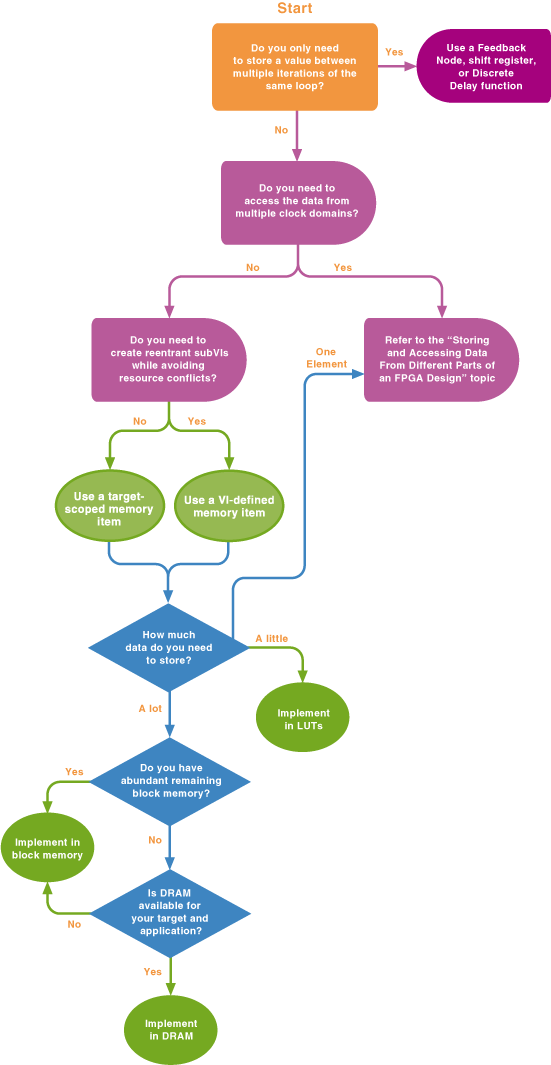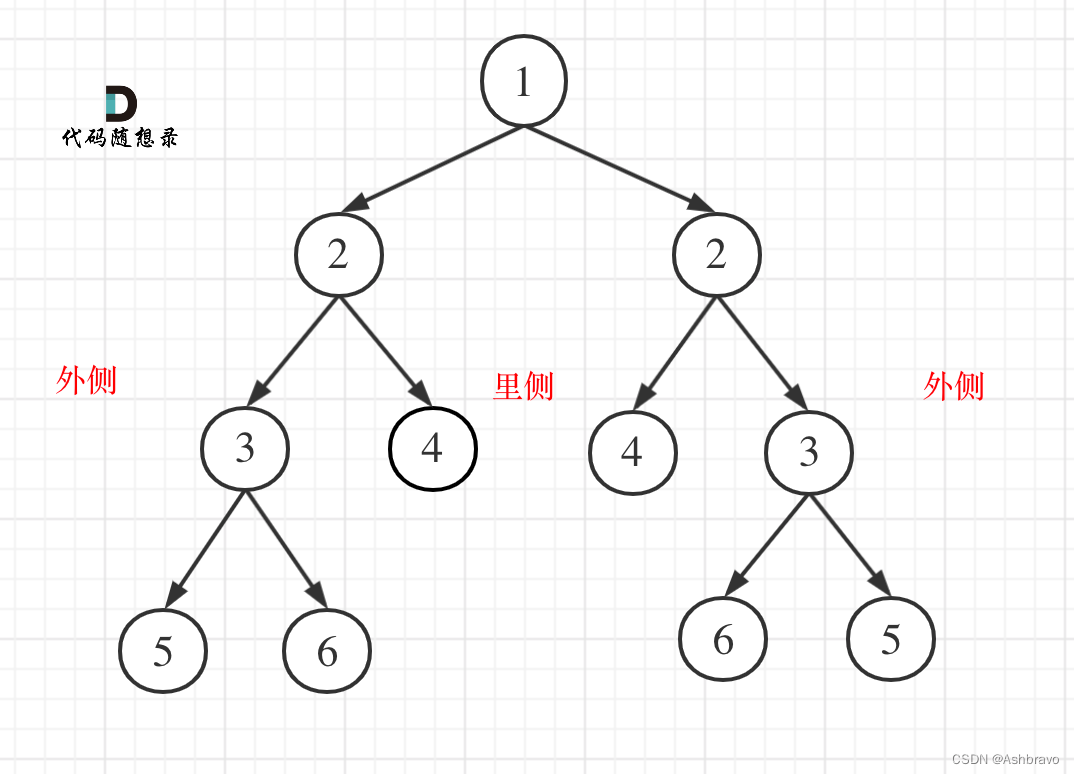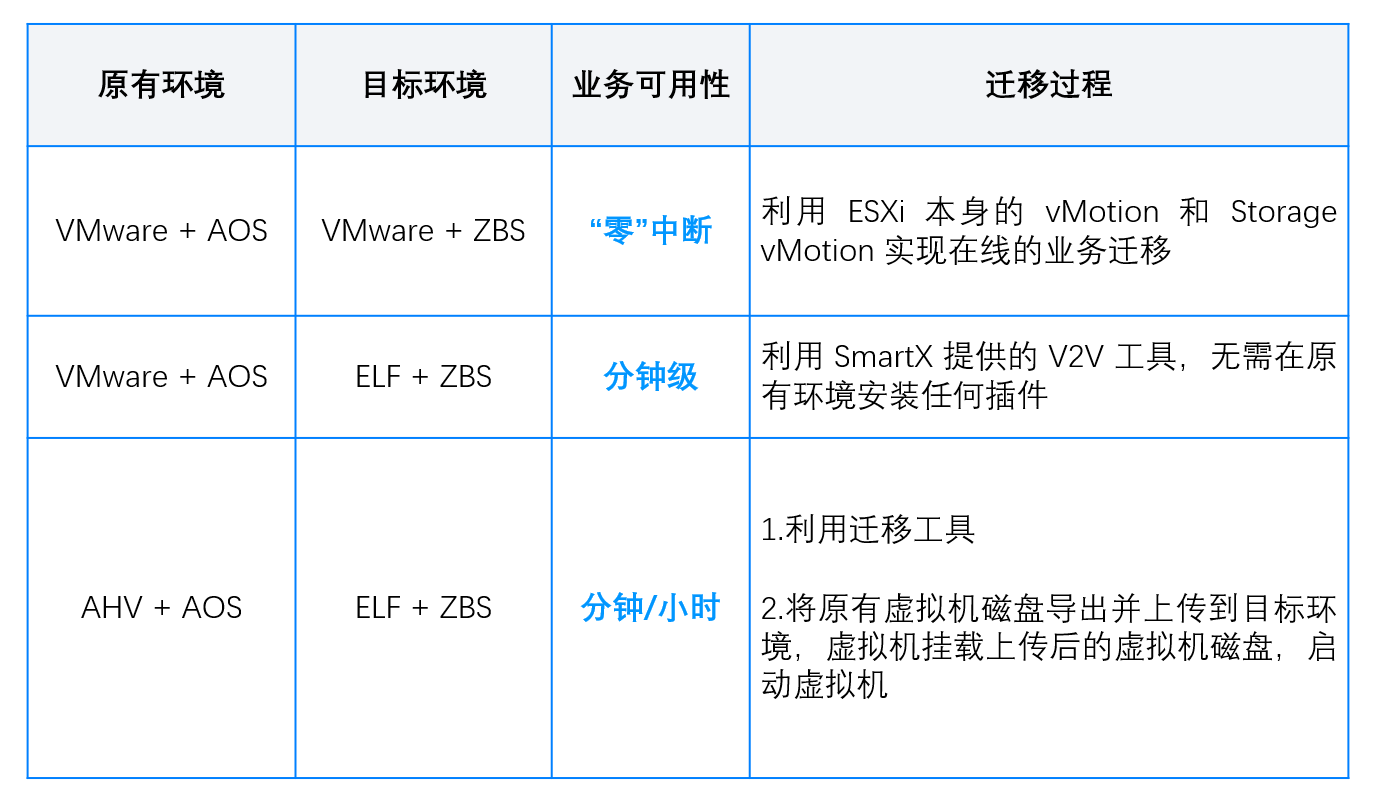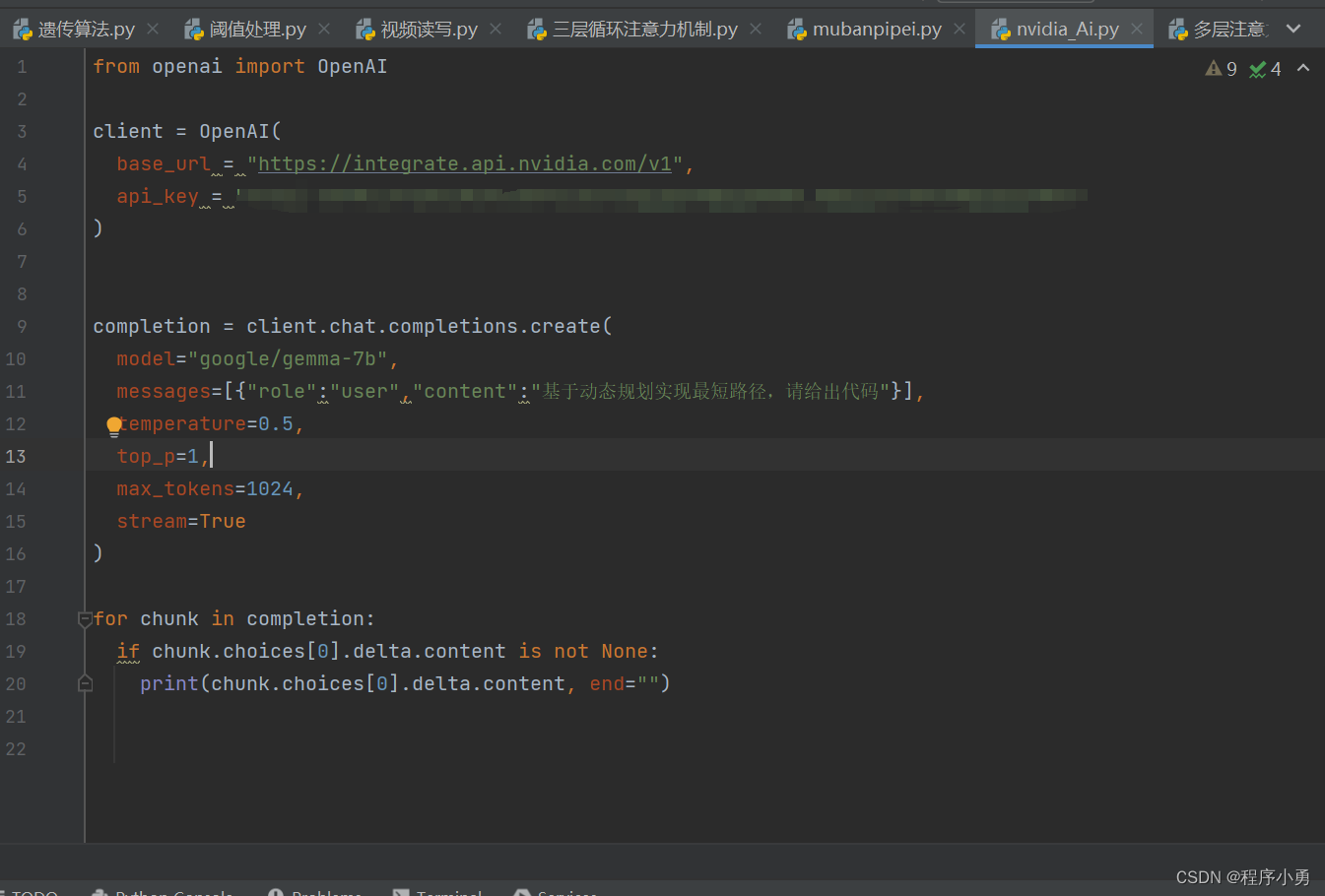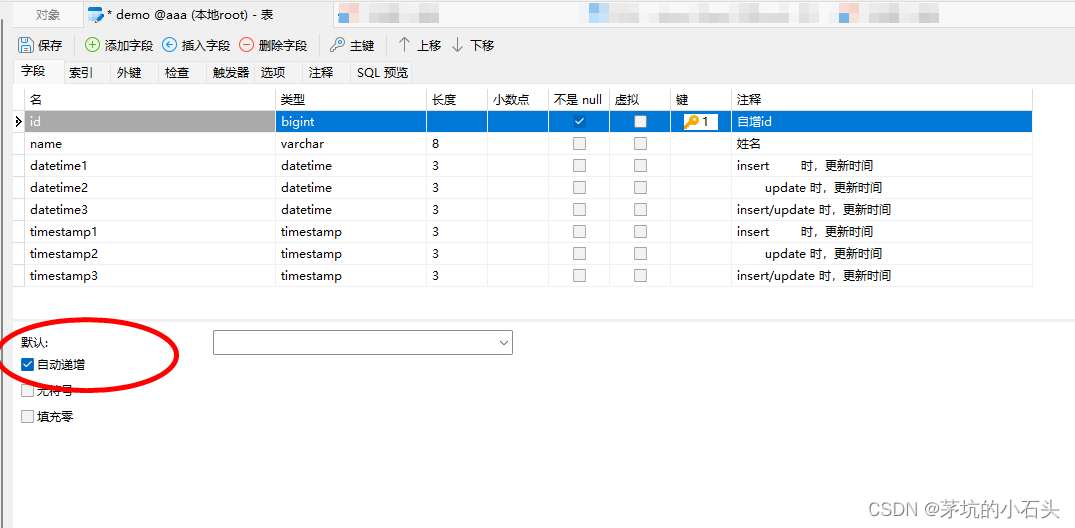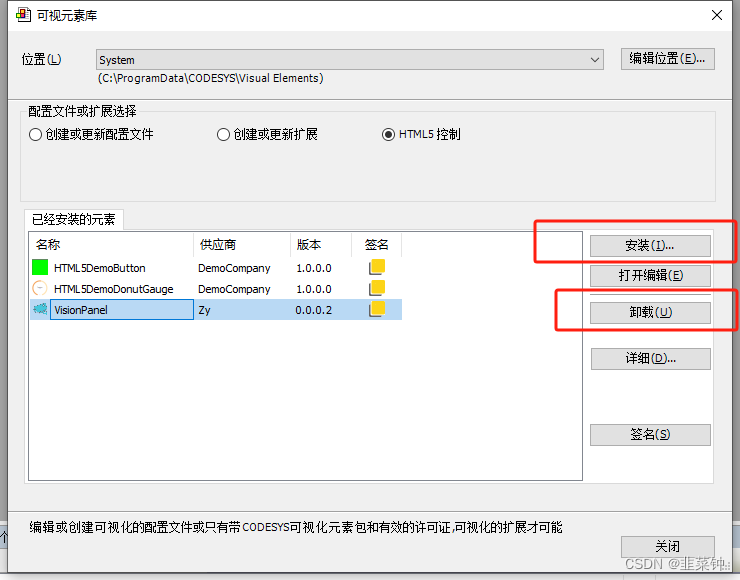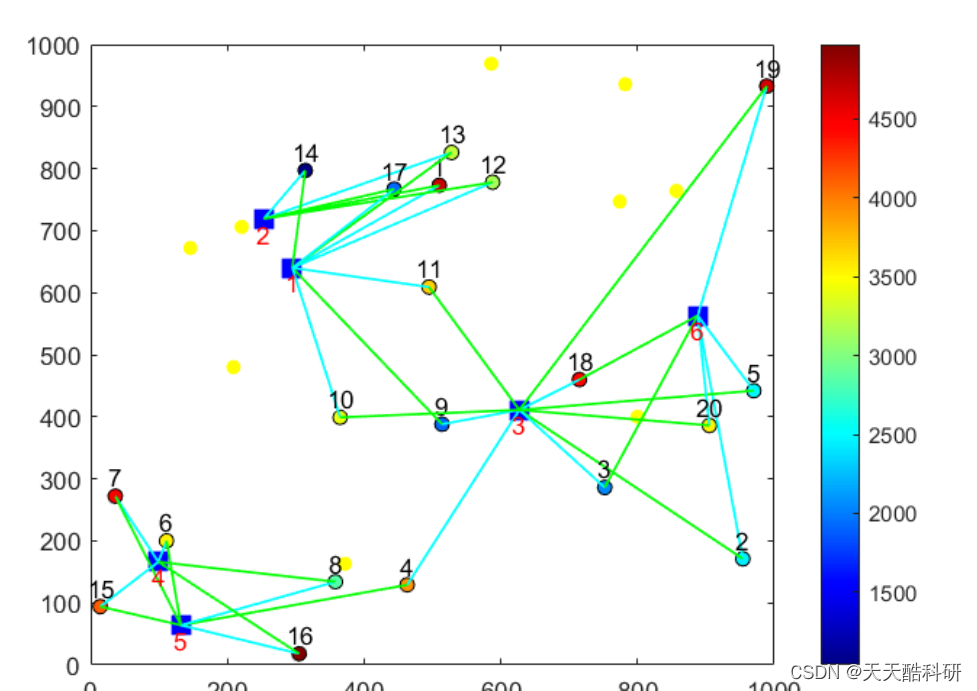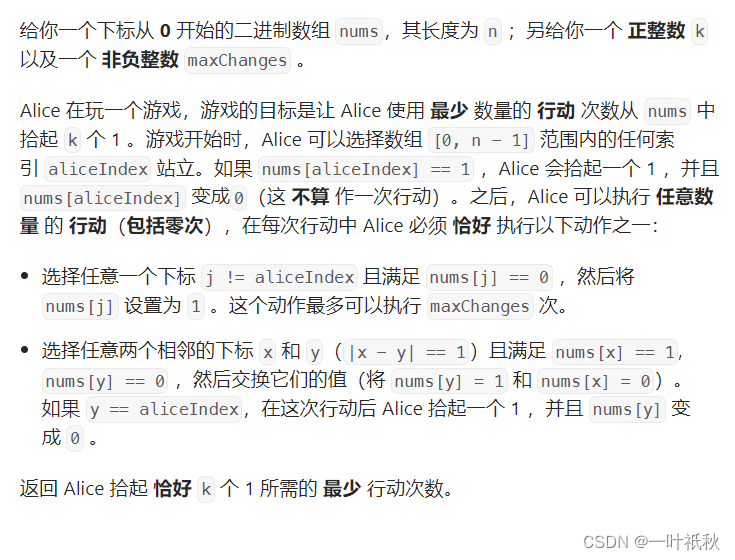一 实现二叉树的按层遍历
1.1 描述
1)其实就是宽度优先遍历,用队列
2)可以通过设置flag变量的方式,来发现某一层的结束(看题目)看下边的第四题解答
1.2 代码
public class Code01_LevelTraversalBT {
public static class Node {
public int value;
public Node left;
public Node right;
public Node(int v) {
value = v;
}
}
public static void level(Node head) {
if (head == null) {
return;
}
Queue<Node> queue = new LinkedList<>();
queue.add(head);
while (!queue.isEmpty()) {
Node cur = queue.poll();
System.out.println(cur.value);
if (cur.left != null) {
queue.add(cur.left);
}
if (cur.right != null) {
queue.add(cur.right);
}
}
}
二 实现二叉树的序列化和反序列化
2.1描述
1)先序方式序列化和反序列化
2)按层方式序列化和反序列化
将二叉树序力化为唯一的字符串叫序力化,字符串也能转出唯一的数二叉树叫反序力化
2.2 分析

2.3 前序列化代码
public static class Node {
public int value;
public Node left;
public Node right;
public Node(int data) {
this.value = data;
}
}
public static Queue<String> preSerial(Node head) {
Queue<String> ans = new LinkedList<>();
pres(head, ans);
return ans;
}
public static void pres(Node head, Queue<String> ans) {
if (head == null) {
ans.add(null);
} else {
ans.add(String.valueOf(head.value));
pres(head.left, ans);
pres(head.right, ans);
}
}2.4 前序反序列化
public static Node buildByPreQueue(Queue<String> prelist) {
if (prelist == null || prelist.size() == 0) {
return null;
}
return preb(prelist);
}
public static Node preb(Queue<String> prelist) {
String value = prelist.poll();
if (value == null) {
return null;
}
Node head = new Node(Integer.valueOf(value));
head.left = preb(prelist);
head.right = preb(prelist);
return head;
}2.5 中序列化代码
由上图可以知道,中序序例化是有歧义的,所以不存在中序的序列化
public static Queue<String> inSerial(Node head) {
Queue<String> ans = new LinkedList<>();
ins(head, ans);
return ans;
}
public static void ins(Node head, Queue<String> ans) {
if (head == null) {
ans.add(null);
} else {
ins(head.left, ans);
ans.add(String.valueOf(head.value));
ins(head.right, ans);
}
}
2.7 中序反列化
2.8 后序列化代码
public static Queue<String> posSerial(Node head) {
Queue<String> ans = new LinkedList<>();
poss(head, ans);
return ans;
}
public static void poss(Node head, Queue<String> ans) {
if (head == null) {
ans.add(null);
} else {
poss(head.left, ans);
poss(head.right, ans);
ans.add(String.valueOf(head.value));
}
}2.9后序反列化代码
public static Node buildByPosQueue(Queue<String> poslist) {
if (poslist == null || poslist.size() == 0) {
return null;
}
// 左右中 -> stack(中右左) 默认是左右中,这种情况没法首先没法建立头节点,因此进行转化为头在前面的情况,把它放入stack(中右左),这是头就先出来,就可以新建head
Stack<String> stack = new Stack<>();
while (!poslist.isEmpty()) {
stack.push(poslist.poll());
}
return posb(stack);
}
public static Node posb(Stack<String> posstack) {
String value = posstack.pop();
if (value == null) {
return null;
}
Node head = new Node(Integer.valueOf(value));
head.right = posb(posstack);
head.left = posb(posstack);
return head;
}3.0 按层序列化和反序列化
3.0.1分析
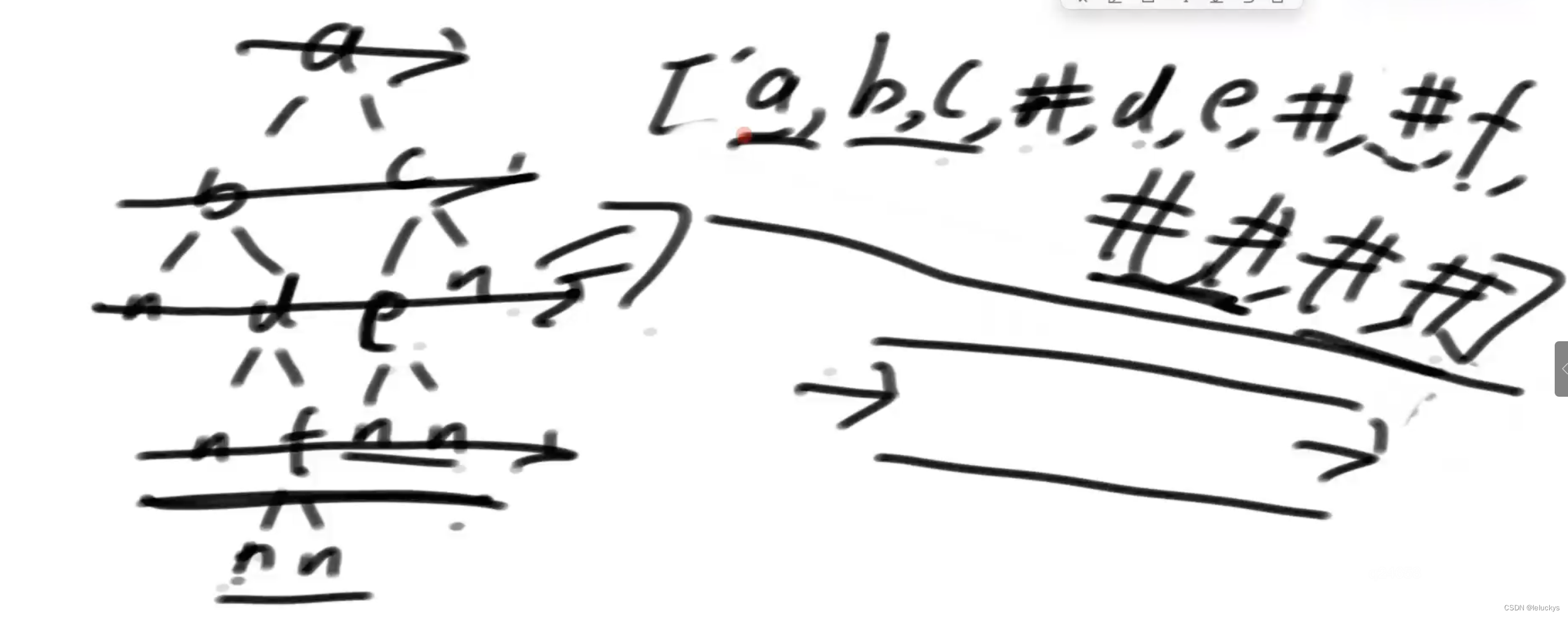 3.0.2 按层序列化 代码
3.0.2 按层序列化 代码
public static Queue<String> levelSerial(Node head) {
Queue<String> ans = new LinkedList<>();
if (head == null) {
ans.add(null);
} else {
ans.add(String.valueOf(head.value));
Queue<Node> queue = new LinkedList<Node>();
queue.add(head);
while (!queue.isEmpty()) {
head = queue.poll(); // head 父 子
if (head.left != null) {
ans.add(String.valueOf(head.left.value));
queue.add(head.left);
} else {
ans.add(null);
}
if (head.right != null) {
ans.add(String.valueOf(head.right.value));
queue.add(head.right);
} else {
ans.add(null);
}
}
}
return ans;
}3.0.3 按层反序列化 代码
public static Node buildByLevelQueue(Queue<String> levelList) {
if (levelList == null || levelList.size() == 0) {
return null;
}
Node head = generateNode(levelList.poll());
Queue<Node> queue = new LinkedList<Node>();
if (head != null) {
queue.add(head);
}
//因为要记录上一次的节点,这里借用队列来完成
Node node = null;
while (!queue.isEmpty()) {
node = queue.poll();
node.left = generateNode(levelList.poll());
node.right = generateNode(levelList.poll());
if (node.left != null) {
queue.add(node.left);
}
if (node.right != null) {
queue.add(node.right);
}
}
return head;
}
public static Node generateNode(String val) {
if (val == null) {
return null;
}
return new Node(Integer.valueOf(val));
}三 Encode N-ary Tree to Binary Tree
3.1 描述
一颗多叉树,序历化为为二叉树,二叉树也能转为原来的多叉树;
3.2 分析
第一步 先将多叉树的每个节点的孩子放在对应节点左树的右边界上;
左树的节点为该节点的第一个树,反回来看某个节点是否有孩子看该节点左数是否有右边孩子
结构如下
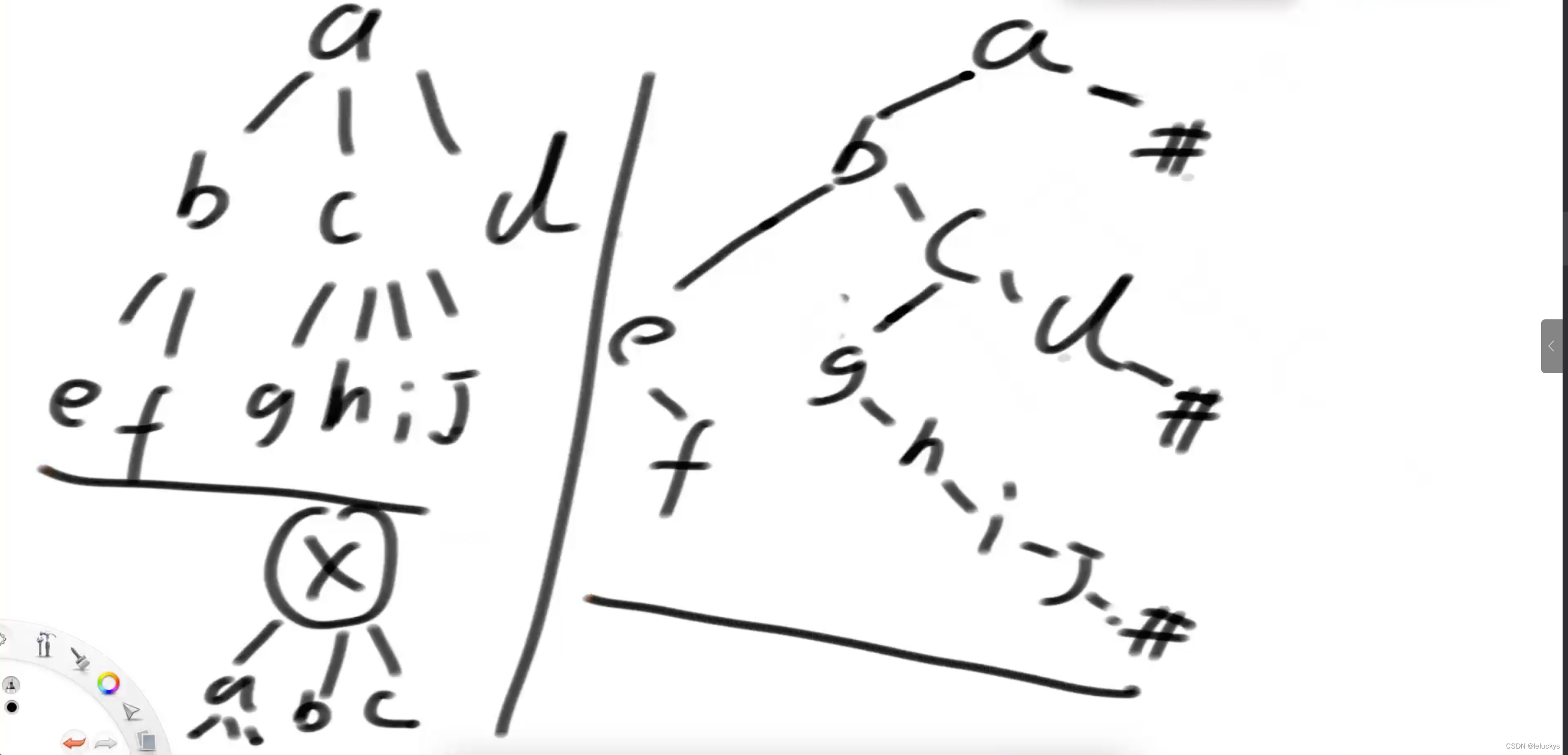
3.3 代码
package class11;
import java.util.ArrayList;
import java.util.List;
// 本题测试链接:https://leetcode.com/problems/encode-n-ary-tree-to-binary-tree
public class Code03_EncodeNaryTreeToBinaryTree {
// 提交时不要提交这个类
public static class Node {
public int val;
public List<Node> children;
public Node() {
}
public Node(int _val) {
val = _val;
}
public Node(int _val, List<Node> _children) {
val = _val;
children = _children;
}
};
// 提交时不要提交这个类
public static class TreeNode {
int val;
TreeNode left;
TreeNode right;
TreeNode(int x) {
val = x;
}
}
// 只提交这个类即可
class Codec {
// Encodes an n-ary tree to a binary tree.
public TreeNode encode(Node root) {
if (root == null) {
return null;
}
TreeNode head = new TreeNode(root.val);
head.left = en(root.children);
return head;
}
private TreeNode en(List<Node> children) {
TreeNode head = null;
TreeNode cur = null;
for (Node child : children) {
TreeNode tNode = new TreeNode(child.val);
if (head == null) {
head = tNode;
} else {
cur.right = tNode;
}
cur = tNode;
cur.left = en(child.children);
}
return head;
}
// Decodes your binary tree to an n-ary tree.
public Node decode(TreeNode root) {
if (root == null) {
return null;
}
return new Node(root.val, de(root.left));
}
public List<Node> de(TreeNode root) {
List<Node> children = new ArrayList<>();
while (root != null) {
Node cur = new Node(root.val, de(root.left));
children.add(cur);
root = root.right;
}
return children;
}
}
}
四 求二叉树最宽的层有多少个节点
4.1 描述
打印二叉树每层的的节点树及最多的节点数;
4.2 分析
根据宽度优先遍历的基础上,要是能知道哪一层结束,那么就能算出每一层的节点数;
设计两个数,Node curEnd = head; // 当前层,最右节点是谁Node nextEnd = null; // 下一层,最右节点是谁
每次遍历当前节点时候,判断该节点是否和记录的curEnd节点相等,相等就是当前层结束了,把当前层的节点数更新到max中,
再将当前节点的每一个左右孩子更新到队列中的过程中,每一步都更新nextEnd的值为当前加队列的值,下一层遍历来的时候更新curEnd值为nextEnd
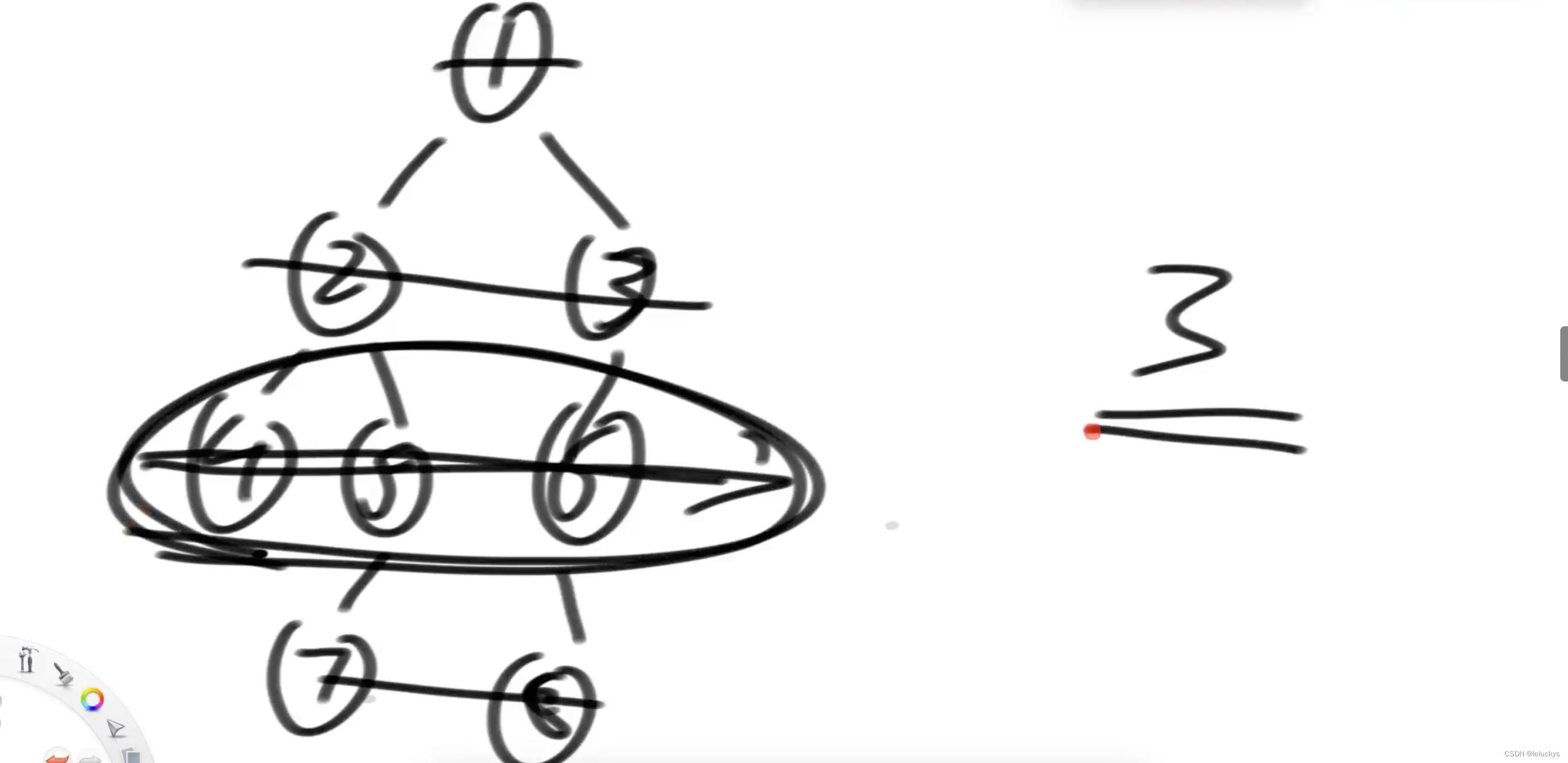

4.3 代码
public static int maxWidthNoMap(Node head) {
if (head == null) {
return 0;
}
Queue<Node> queue = new LinkedList<>();
queue.add(head);
Node curEnd = head; // 当前层,最右节点是谁
Node nextEnd = null; // 下一层的最右节点是谁。提前为下一层出来的end节点做准备
int max = 0;
int curLevelNodes = 0; // 当前层的节点数
while (!queue.isEmpty()) {
Node cur = queue.poll();
if (cur.left != null) {
queue.add(cur.left);
nextEnd = cur.left;
}
if (cur.right != null) {
queue.add(cur.right);
nextEnd = cur.right;
}
curLevelNodes++;
if (cur == curEnd) {
max = Math.max(max, curLevelNodes);
curLevelNodes = 0;
curEnd = nextEnd;
}
}
return max;
}
//使用额外HashMapd
public static class Node {
public int value;
public Node left;
public Node right;
public Node(int data) {
this.value = data;
}
}
public static int maxWidthUseMap(Node head) {
if (head == null) {
return 0;
}
Queue<Node> queue = new LinkedList<>();
queue.add(head);
// key 在 哪一层,value
HashMap<Node, Integer> levelMap = new HashMap<>();
levelMap.put(head, 1);
int curLevel = 1; // 当前你正在统计哪一层的宽度
int curLevelNodes = 0; // 当前层curLevel层,宽度目前是多少
int max = 0;
while (!queue.isEmpty()) {
Node cur = queue.poll();
int curNodeLevel = levelMap.get(cur);
if (cur.left != null) {
levelMap.put(cur.left, curNodeLevel + 1);
queue.add(cur.left);
}
if (cur.right != null) {
levelMap.put(cur.right, curNodeLevel + 1);
queue.add(cur.right);
}
if (curNodeLevel == curLevel) {
curLevelNodes++;
} else {
max = Math.max(max, curLevelNodes);
curLevel++;
curLevelNodes = 1;
}
}
max = Math.max(max, curLevelNodes);
return max;
}
五 二叉树中的某个节点,返回该节点的后继节点
5.1 描述
后继节点 :比如中序遍历,求该节点的4的后继节点,就是中序遍历遍历到该节点后的所有节点
二叉树结构如下定义:
Class Node {
V value;
Node left;
Node right;
Node parent;
}
给你二叉树中的某个节点,返回该节点的后继节点
5.2 分析 中序遍历
5.2.1 方案一 先通过parrent 找到的他的跟节点后,然后通root找到他的中序遍历,然后就可以找到该节点的后继节点
方案二
5.2.2 情况1一 如果该节点有右数,那么他的后继节点一定是他右树的最左侧节点
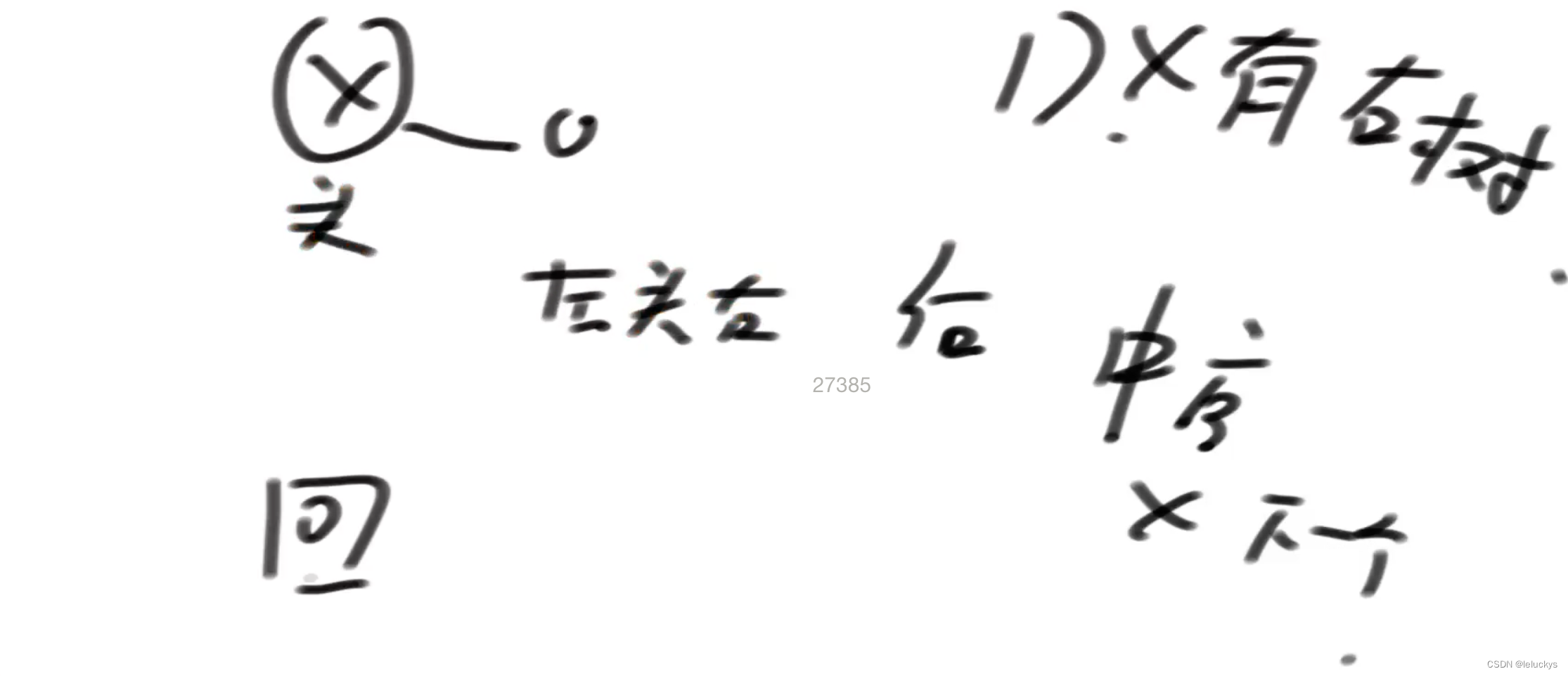
情况二 当该节点没有右树的时候,去找该节点是谁的节点左树的最右侧节点(中序遍历的本质理解)如果没有右子树,根据中序遍历的特点,下一个就应该是去找该节点是谁的节点左树的最右侧节点
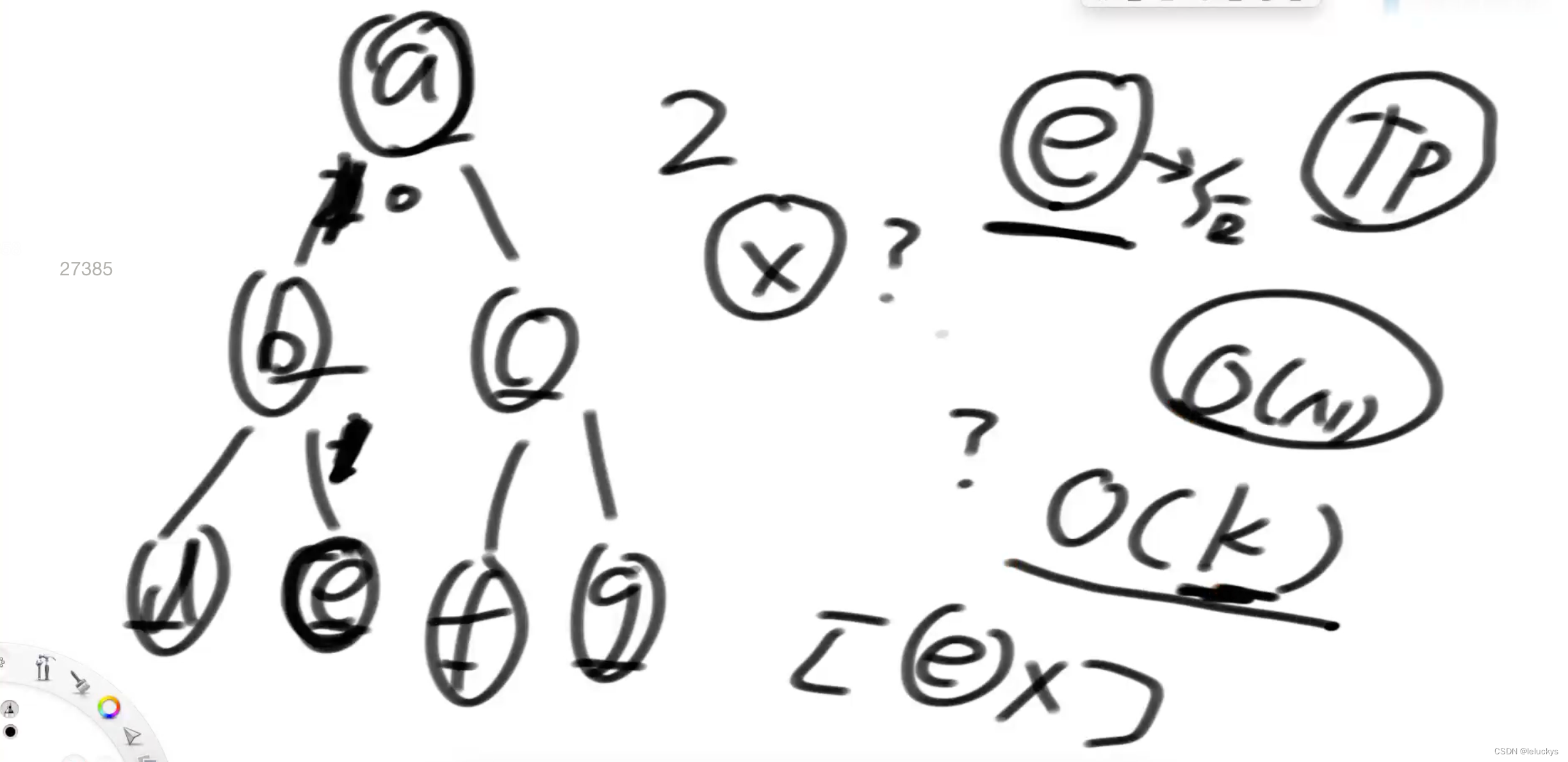
情况二 讨论如下 找一个数的后继节点,一直往上找,通过找到该节点的最后一个父节点,该节点的右子树就是他的后继节点
如下,x是y左数的最右节点,所以打印完x就该打印y了 == 找的就是那个左树上的最右节点
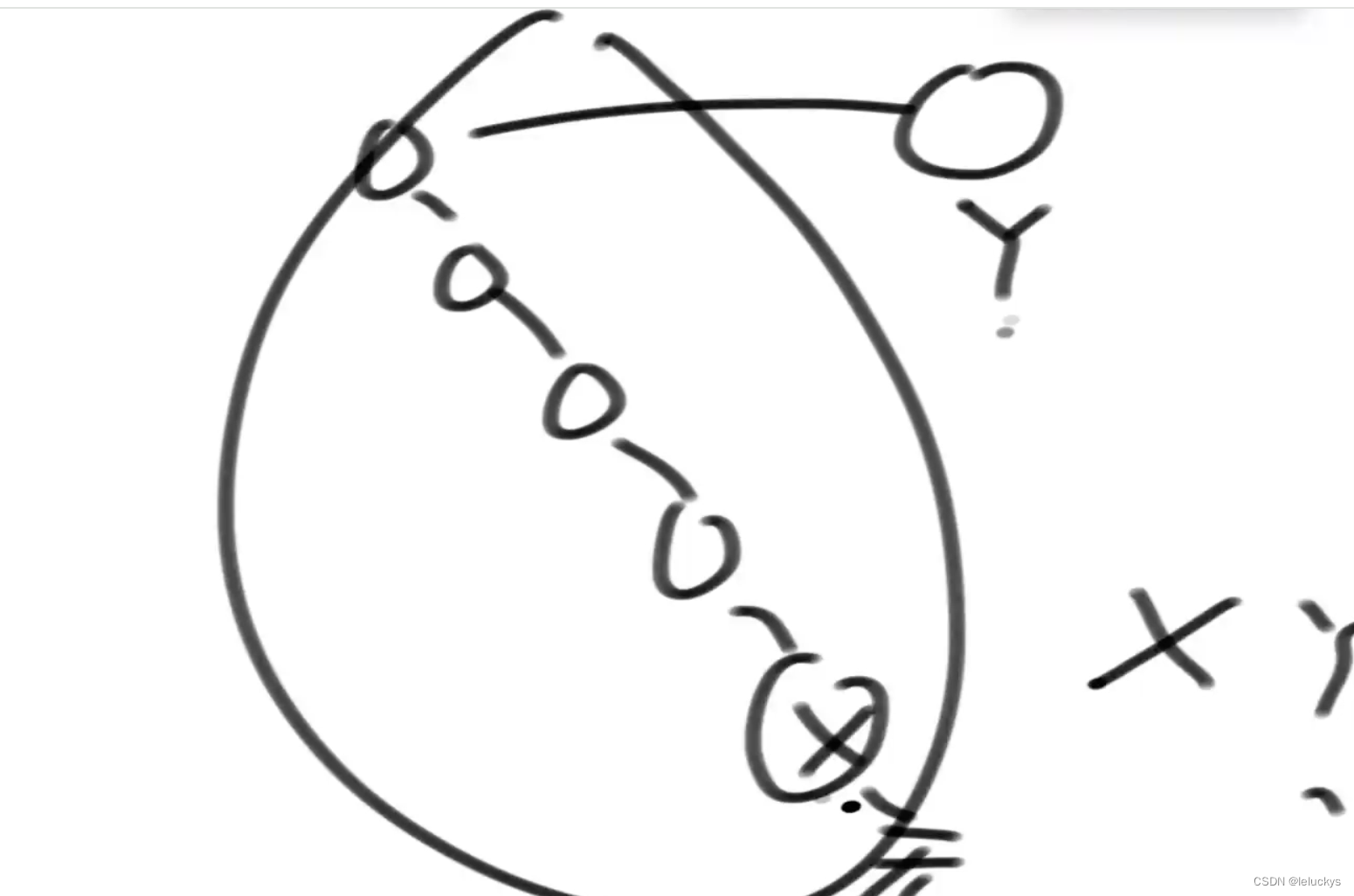
5.3 代码
public class Code06_SuccessorNode {
public static class Node {
public int value;
public Node left;
public Node right;
public Node parent;
public Node(int data) {
this.value = data;
}
}
public static Node getSuccessorNode(Node node) {
if (node == null) {
return node;
}
if (node.right != null) {
return getLeftMost(node.right);
} else { // 无右子树
Node parent = node.parent;
while (parent != null && parent.right == node) { // 当前节点是其父亲节点右孩子
node = parent;
parent = node.parent;
}
return parent;
}
}
public static Node getLeftMost(Node node) {
if (node == null) {
return node;
}
while (node.left != null) {
node = node.left;
}
return node;
}
